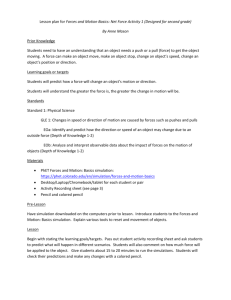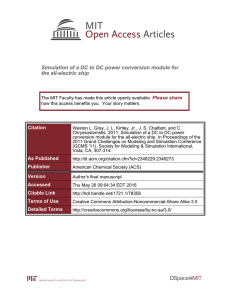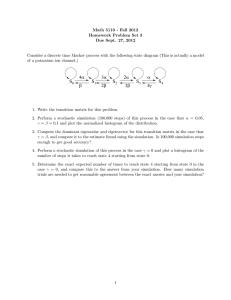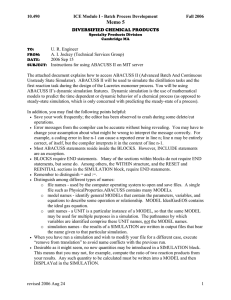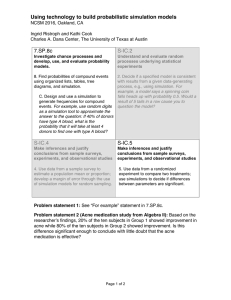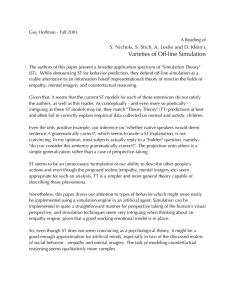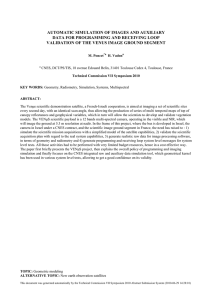Executive Summary Modeling Public Health Outcomes
advertisement
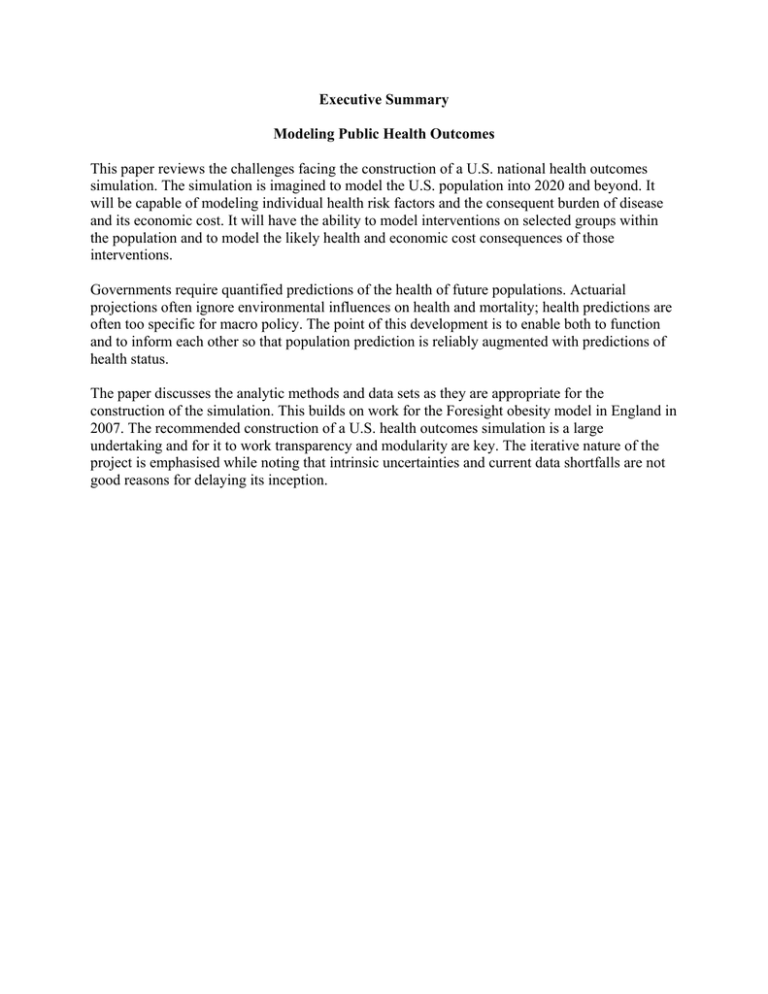
Executive Summary Modeling Public Health Outcomes This paper reviews the challenges facing the construction of a U.S. national health outcomes simulation. The simulation is imagined to model the U.S. population into 2020 and beyond. It will be capable of modeling individual health risk factors and the consequent burden of disease and its economic cost. It will have the ability to model interventions on selected groups within the population and to model the likely health and economic cost consequences of those interventions. Governments require quantified predictions of the health of future populations. Actuarial projections often ignore environmental influences on health and mortality; health predictions are often too specific for macro policy. The point of this development is to enable both to function and to inform each other so that population prediction is reliably augmented with predictions of health status. The paper discusses the analytic methods and data sets as they are appropriate for the construction of the simulation. This builds on work for the Foresight obesity model in England in 2007. The recommended construction of a U.S. health outcomes simulation is a large undertaking and for it to work transparency and modularity are key. The iterative nature of the project is emphasised while noting that intrinsic uncertainties and current data shortfalls are not good reasons for delaying its inception.




